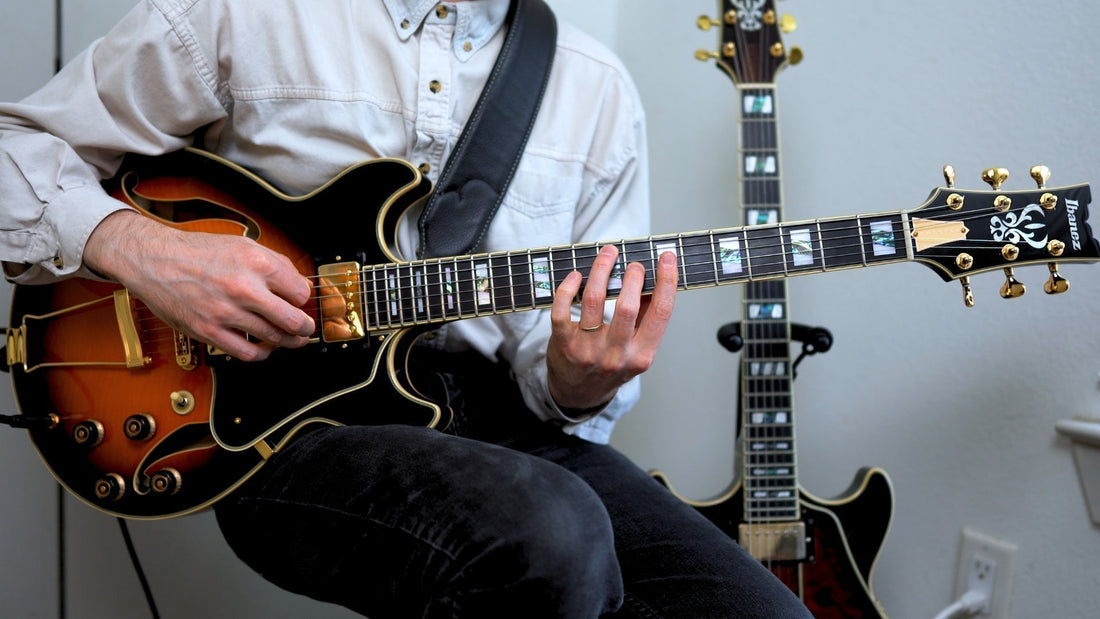I have long been fascinated by triads and how to implement them on the guitar neck—particularly within the context of improvised soloing. As it turns out, I’m not the only one intrigued by this topic, as triad-related soloing is probably the subject I’m asked about most frequently. If you’re familiar with my masterclass How To Warm Up, you’ll know that I believe warming up is the most important part of your practice day. For me, it’s a time to revisit the most vital core materials of my playing—namely, scales, modes, and arpeggios.
Typically, my warm-up routine begins with selecting an arpeggio “family”—for example, Major 7#5 arpeggios—and playing all Major 7#5 arpeggios in all 12 keys. I’ve started my practice day with this warm-up concept every day since 2008… how time flies! It has taken me until this week—the first week of April, 2025—to grow slightly tired of this long-running routine. Instead, I decided to put down my guitar pick (possibly as a result of recently revisiting numerous Bach pieces that simply work better with the rudimentary leftovers of my long-forgotten classical guitar technique than with a pick) and began to bask in the sonic purity of triads—particularly spread triads, cycling through 4th intervals in all 12 keys.
Spread triads have become a firmly anchored part of the contemporary guitar lexicon, and for good reason. Even the most cursory of glances at Sonatas and Partitas for Solo Violin reveals that Bach’s use of spread triads works almost too perfectly on the guitar neck. Beyond the Baroque era, a succession of brilliant guitarists have brought spread triads to our attention—Mick Goodrick, Pat Metheny, Wolfgang Muthspiel, Kurt Rosenwinkel, Brad Shepik, and many more.
Focusing on spread triads as the new basis of my warm-up routine, I’ve found this etude to have a beautiful, meditative quality—which, for me, is a wonderful way to begin the practice day.
Here is the conceptual basis of the triadic warm-up I’ve been playing this week:
Triadic Cycle #1:

Triadic Cycle #2:

Triadic Cycle #3:

The key to this warm-up is simply using spread triad inversions to your advantage. I discuss my approach to these inversions in some depth in How To Solo With Triads at Ben’s Guitar Club. I hope you find this to be as useful and enjoyable as I have.
Keep on shredding,
Ben


1 comment
Great examples, Ben. I’m going to practice with this today